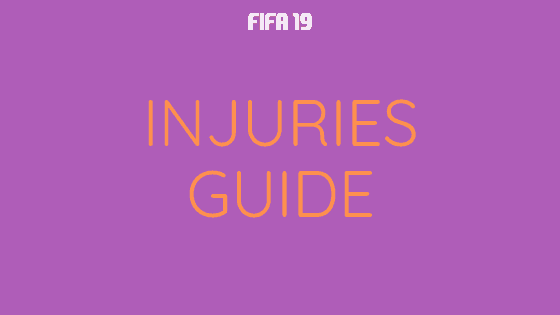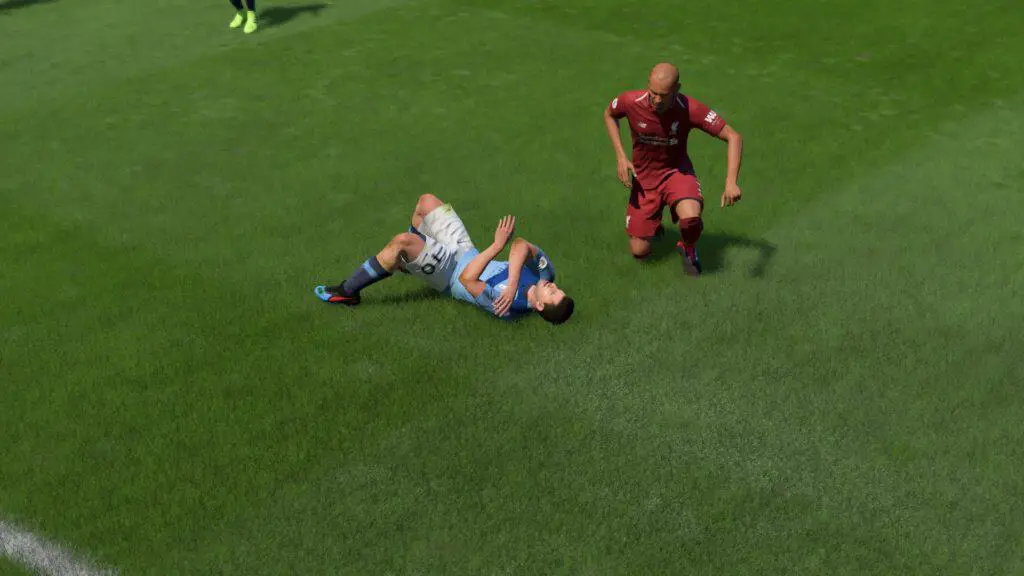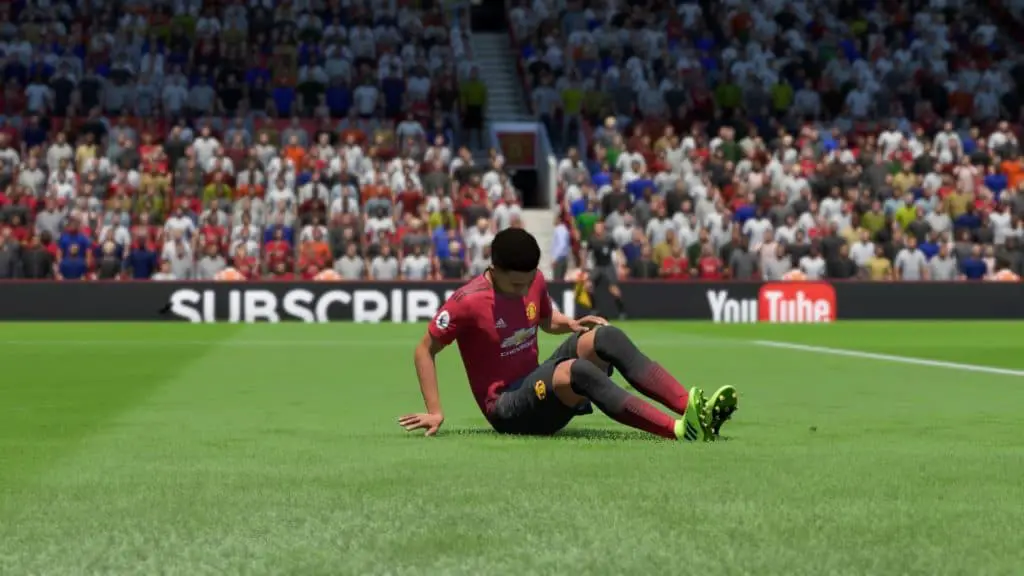
Injuries in FIFA 19
Although their presence in FIFA career mode makes the game more realistic, injuries can be incredibly frustrating. So, what do we know about the causes of injuries and moreover, what can we do to prevent them?
What Causes Injuries in FIFA 19?
Gameplay
The main time you’ll see an injury occur in-game is from a bad tackle or collision. The latter is usually two players jumping to compete for a header but can just as easily be a coming together of two players. When this happens, the player will usually remain on the ground for a period of time. They also tend to hold or rub the affected area, which can give you a clue as to what kind of injury it is. Geoff Shreeves’ injury updates are sometimes useful in this regard, but hearing that a play has “gone over on top of his elbow” gets a little tiring after the 500th time. Depending on the severity of the injury, the player will do one of these things:
- Shake off the injury (temporary band-aid symbol)
- Play through the injury (band-aid symbol)
- Go off the pitch temporarily for treatment
- Severe injury (ambulance symbol) where the player is unable to continue and must be substituted.

It’s also possible for players to get injuries without making contact with another player. If a player’s stamina bar is very low and they’re performing a run or sprint, they might pull up. When this happens they will lose control of the ball and gradually come to a stop while limping.
Simulated Games
You can argue that simulating games makes injuries even more likely. We’ve seen code that governs simmed games from a previous instalment that put the chances of getting at injury at 16%. If you did get an injury, it would either be light (80% of the time), medium (15%) or severe (5%). From experience, simming games also makes it much more likely that your goalkeeper will get an injury. This seems to be an incredible rare occurrence in actual matches.
Training Injuries
The final possibility is a training injury. This is probably the most frustrating one as they tend to surprise you and can often be very severe injuries. When this happens you’ll receive an email to inform you.
How to Avoid Injuries in FIFA 19?
Players
The most obvious tip relates to the players you buy and works both ways. Players with the Injury Prone trait are obviously much more likely to suffer injuries, and more severe ones at that. At the other end of the spectrum, some players possess the Solid Player trait. These players have a vastly reduced chance of suffering an injury. You should also prioritise players with a high stamina attribute, or train those with a low number.
Gameplay
During games, keep an eye on player stamina bars. Substituting tired players removes most of the risk of injury.
Another tip involving substitutions is to use all of them, the earlier the better. When a severe injury occurs, the player must be substituted. If you’ve already used all of your allotted substitutions, the game seems to turn off the possibility of a severe injury. While this won’t stop light-medium injuries, it will at least reduce the number of season-ruining ones.

If a player does suffer a light-medium injury (band-aid symbol) during a game and it persists after a few minutes, it’s a good idea to substitute them. There’s a chance that making them play more causes the injury to worsen and increases their time out.
The other option to reduce injuries in-game, is to change the sliders. These can be found in the game settings menu, where you’ll be able to increase/decrease the likelihood and severity of injuries.
Squad Management
Working back from our previous tips, you should try and avoid exhausted players altogether. Rotate your squad when you feel that you are able to. This is especially important during periods when matches are every few days and players aren’t recovering fully.
Sometimes after a long-term injury, a player will switch from the ambulance symbol to a band-aid symbol. This indicates that the injury has lessened and you might be able to play them. Sometimes the player will even approach you directly and tell you that he is “okay to play“. Unless you’re desperate, we’d recommend avoiding this.
Common Injuries and Timescales
Below is a list of the injuries you’ll come across in FIFA career mode. For each one we’ve provided an approximate amount of time that a player would be unavailable for.
- Anterior Cruciate Ligament – 4 months
- Broken Ankle – 7 Weeks
- Broken Collarbone – 8 Weeks
- Broken Elbow – 4 Weeks
- Broken Rib – 2-3 Months
- Broken Metatarsal – 5 Weeks
- Broken Tibia – 5 Months
- Broken Toe – 2 Months
- Bruised Rib – 3-9 Days
- Bruised Shoulder – 5 Days
- Concussion – 4-21 Days
- Dead Leg Calf – 2 Days
- Dislocated Shoulder – 2-5 Weeks
- Hyper Extended Knee – 7 Days
- Pulled Calf – 1-2 Weeks
- Pulled Groin – 2 Weeks
- Pulled Hamstring – 7 Days
- Pulled Quad – 3 Weeks
- Sprained Knee – 7 Days
- Torn Hamstring – 6 Weeks
- Torn Hip Flexor – 6 Weeks
- Torn Quadriceps Muscle – 8 Weeks